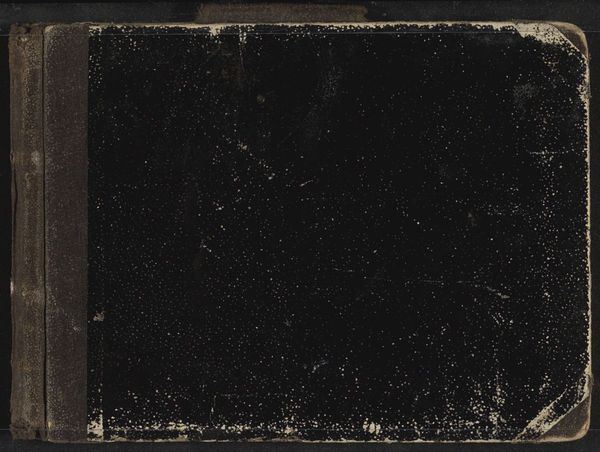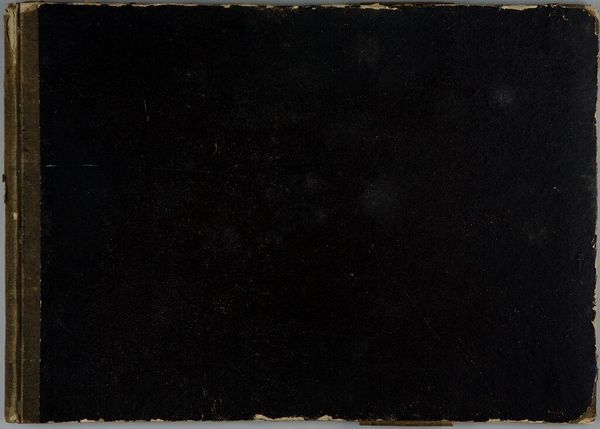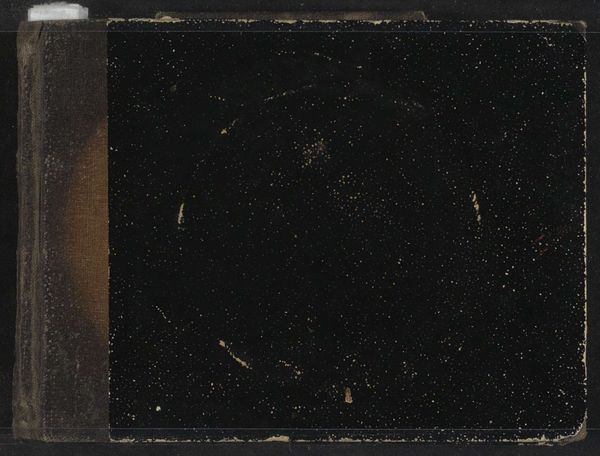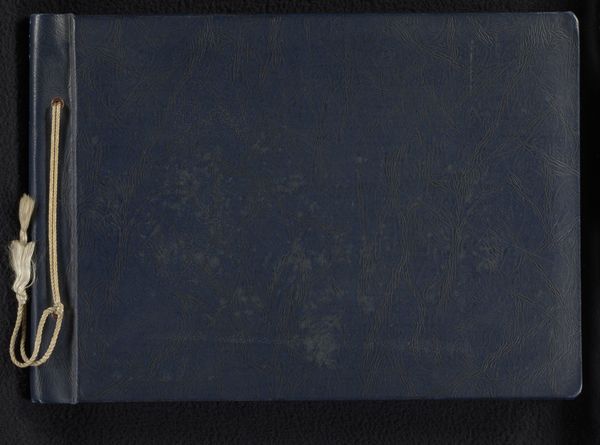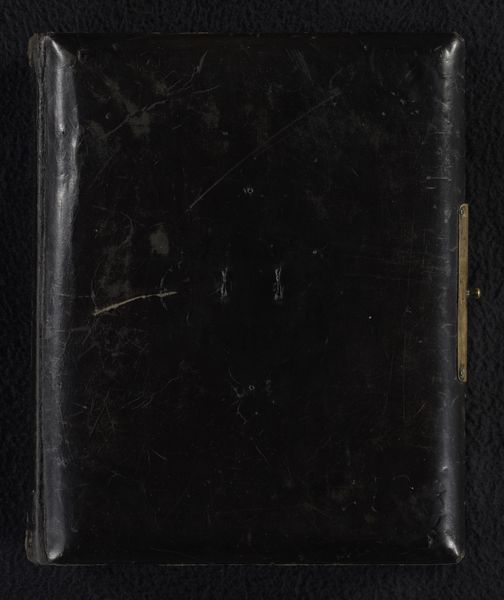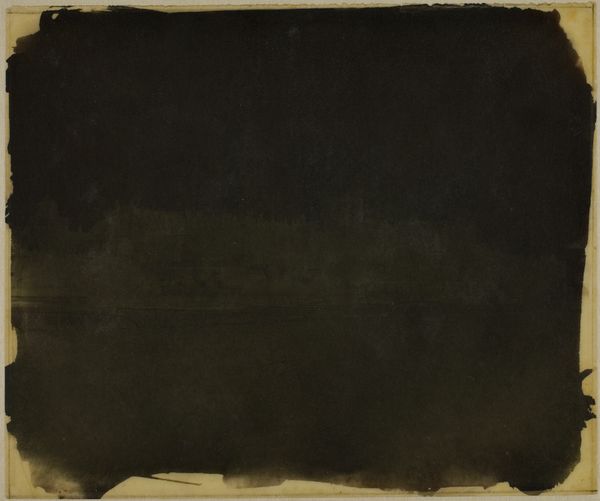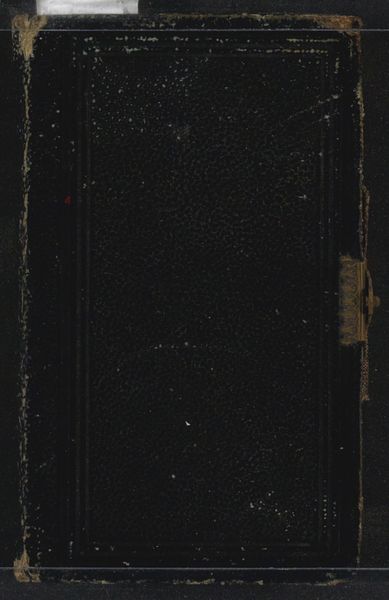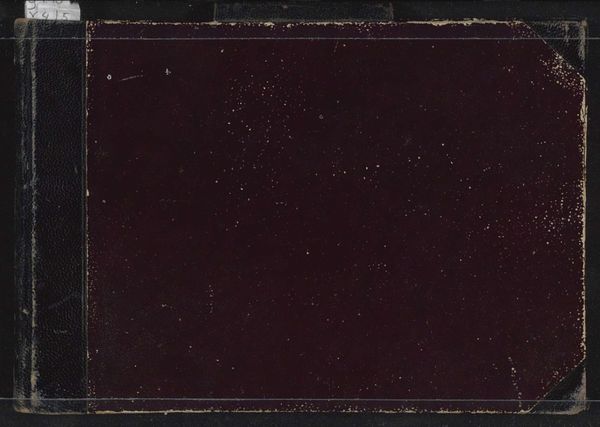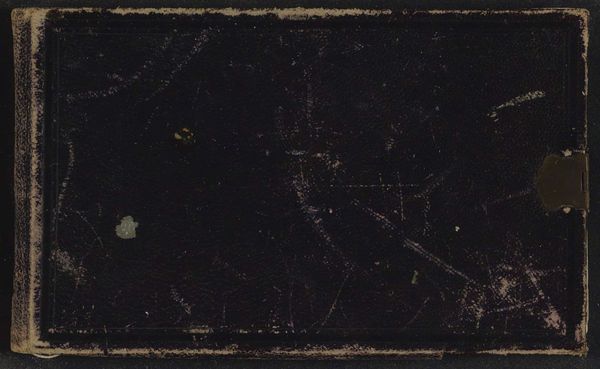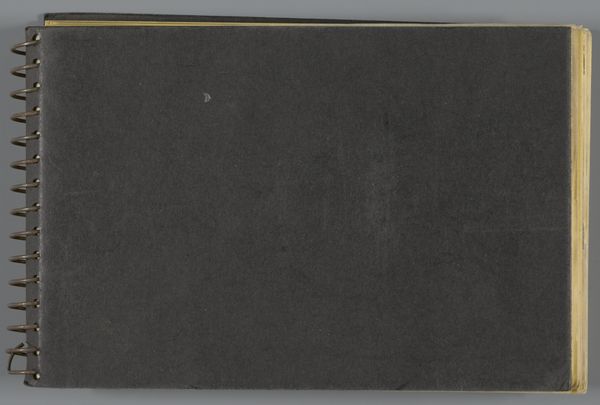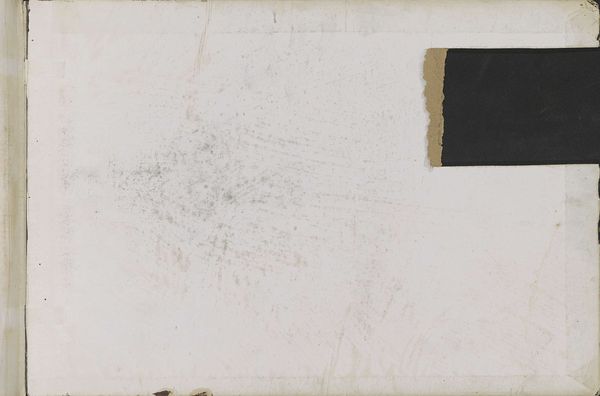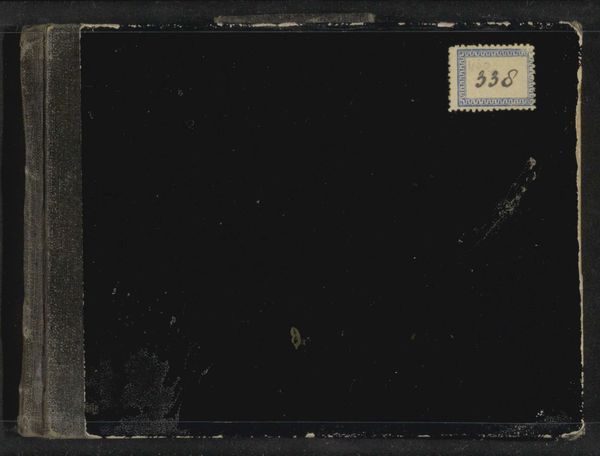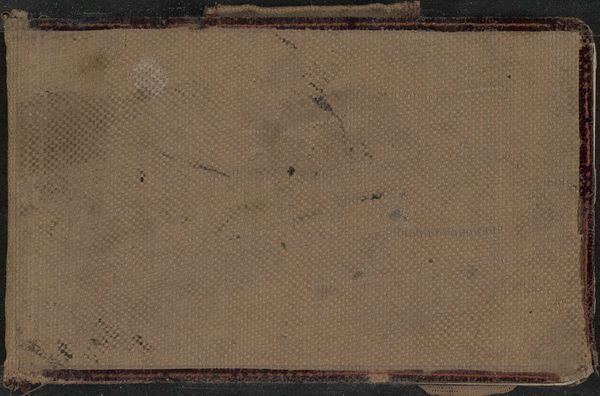
Dimensions: height 119 mm, width 75 mm, thickness 5 mm, width 150 mm
Copyright: Rijks Museum: Open Domain
Curator: Breitner’s “Sketchbook with 30 Leaves, Made in Amsterdam,” dating from 1893 and held here at the Rijksmuseum, presents a compelling case study for understanding artistic process and urban life in the late 19th century. Editor: It has the presence of something excavated. The cover, darkened and scarred, feels less like a sketchbook and more like a relic recovered from a dig site, hinting at concealed stories and fragmented narratives. Curator: Indeed. Sketchbooks such as this served Breitner as vital tools for gathering visual information in the bustling streets of Amsterdam. Predominantly rendered in pencil, graphite, and frottage techniques, it offers glimpses into both landscapes and portrait studies. They're not just preparatory studies; they offer a perspective of Amsterdam undergoing dramatic urban transformation and increasing social tensions. Editor: Absolutely. I find myself drawn to its abstract qualities. The distressed cover itself becomes an accidental landscape. Those seemingly random scratches and marks read as traces, almost runes, suggestive of the hidden symbols of a world rapidly changing. Does it convey something about modernity itself – this tension between creation and destruction? Curator: It’s a tantalizing point, connecting the artist's subjective experience with larger social narratives. Breitner’s association with the Amsterdam Impressionism movement marks a radical shift from Romantic idealism towards capturing lived realities, engaging directly with modernity's effects on everyday life. The rapid urban growth and visible social strata fueled a creative environment that both inspired and troubled artists. Editor: Consider, then, the inherent symbolism of a sketchbook – a vessel, both literally and figuratively, carrying the seeds of ideas, memories, and impressions. And if these particular impressions capture an Amsterdam experiencing this transformation, do we then see Breitner as trying to preserve a fading reality? The artist could become a modern-day scribe. Curator: Breitner positioned himself to confront urban change, using realism to invite introspection and critique. Sketchbooks such as this provided a testing ground for what art could, or should, address at this key point in time. Editor: The raw intimacy of these pages invites a kind of archaeological viewing, as if deciphering the soul of a city through the worn covers of its secrets. Curator: Quite, a fragmented testament to the ephemeral and ever-changing essence of urban life.
Comments
No comments
Be the first to comment and join the conversation on the ultimate creative platform.
